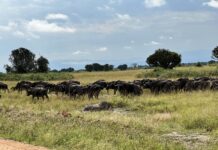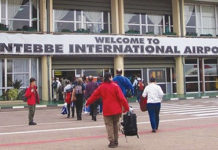Established in 1908, the Uganda Museum is East Africa’s oldest museum. It is the national museum in Uganda- The Pearl of Africa, located in the heart of Kampala city near Uganda Wildlife Authority (UWA) headquarters and the British High Commission. It is found on plot 5 Old Kira Road, Kitante Hill just after Mulago National Referral Hospital, northern Kampala.
What is Exhibited at the National Museum
Uganda’s cultural heritage that is; the traditional life collections, natural-historical collections, and ethnological collections all showcased and exhibited in the Uganda National Museum.
When was the National Museum Established?
Its establishment dates back to 1908 when Governor George Wilson called for all objects of interest countrywide. The collections to find at the museum include hunting equipment, musical instrument, archeology, weaponry, entomology, etc.
How the Uganda National Museum was established
The now Uganda Museum began in a small Sikh temple at Fort Lugard along Old Kampala Hill. Church Hill, Bishop J Wilson, and others conducted archaeology and paleontological surveys in the 1920s and 1940s. At the time, Fort Lugard became very small to contain all the collections and it was transferred to the Margret Trowel School of Fine Art in Makerere University College in 1941. Funds were mobilized and a permanent place was built where the museum now sits. In 2008, the Uganda Museum marked 100 years.
Galleries expected to be seen at the Uganda tour to the Museum
Uganda Museum holds several galleries; natural history, ethnography, early history, traditional music, science, and industry.
The Ethnography Gallery
 The ethnography gallery features over 100,000 objects of historical & cultural significance. A traditional reed door takes guests to where health, knowledge systems, as well as objects of warfare, are exhibited. Other exhibits showcased here include traditional dressing and different ceremonial practices.
The ethnography gallery features over 100,000 objects of historical & cultural significance. A traditional reed door takes guests to where health, knowledge systems, as well as objects of warfare, are exhibited. Other exhibits showcased here include traditional dressing and different ceremonial practices.
The Music Gallery
The music gallery showcases a comprehensive collection of East Africa’s musical instruments. The various instruments are arranged according to the major groups of musical instruments and include drums, wind, percussion, and string instruments.
Research conducted by the Uganda Museum
The museum conducts research countrywide and intensive studies are done in Karamoja regions –Kadam, Moroto, and Napak; eastern Uganda at Mount Elgon foothills in Bukwo, and the entire western rift to SDellu close to the South Sudan border with Uganda. The museum’s paleontological research unit has yielded fossils that relate to human evolution, especially the fossil skull of a remote cousin of Hominidae aged 19 to 20 million years back was discovered in Napak.
The management of the Uganda museum
The Uganda Museum works together with Makerere University, Mbarara University, the University of Michigan, the Natural History Museum in Paris, etc. The different collections at the museum include those of the 1960s to date.
Education service
Besides the permanent exhibits in the galleries, the museum also provides incredible educational services, especially demonstration lessons, complimentary services, workshops, and outreach programs. Different topical lessons related to the school curriculum are arranged and it is possible to conduct student tours at the museum. Even guests who are on holiday in Uganda are able to reflect on the different cultural heritage on display here.
The cultural village section
 Just outside the museum’s premises there is a cultural village section where various architectural and traditional lifestyles in Uganda are represented. They are categorized in various traditional huts/houses as per the traditional tribes in the country including Ankole, Buganda, Bagisu, Batooro, Lango, Bamba, and others. Each of the huts features its clan, hunting spears, dress code, and other useful cultural exhibits.
Just outside the museum’s premises there is a cultural village section where various architectural and traditional lifestyles in Uganda are represented. They are categorized in various traditional huts/houses as per the traditional tribes in the country including Ankole, Buganda, Bagisu, Batooro, Lango, Bamba, and others. Each of the huts features its clan, hunting spears, dress code, and other useful cultural exhibits.






